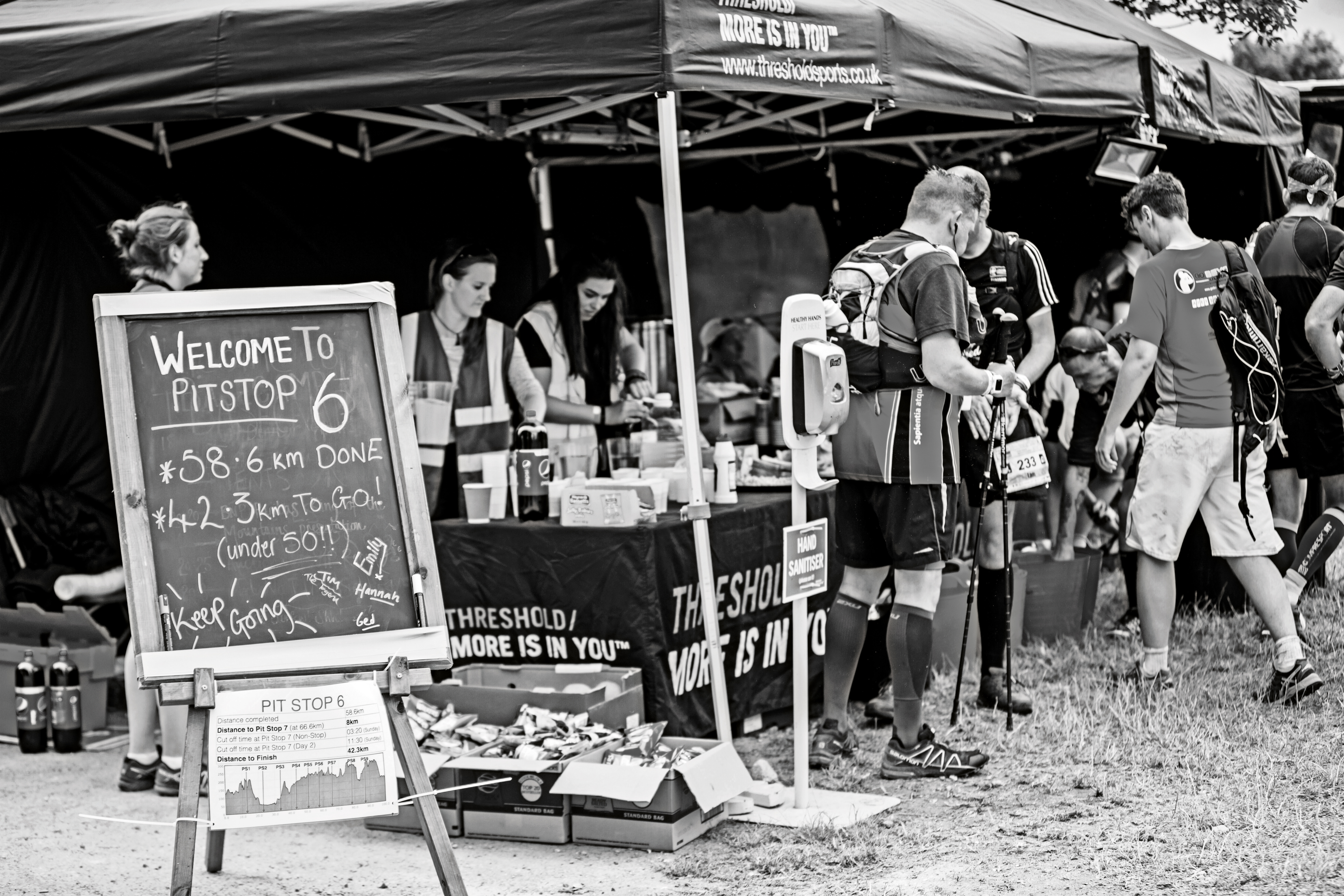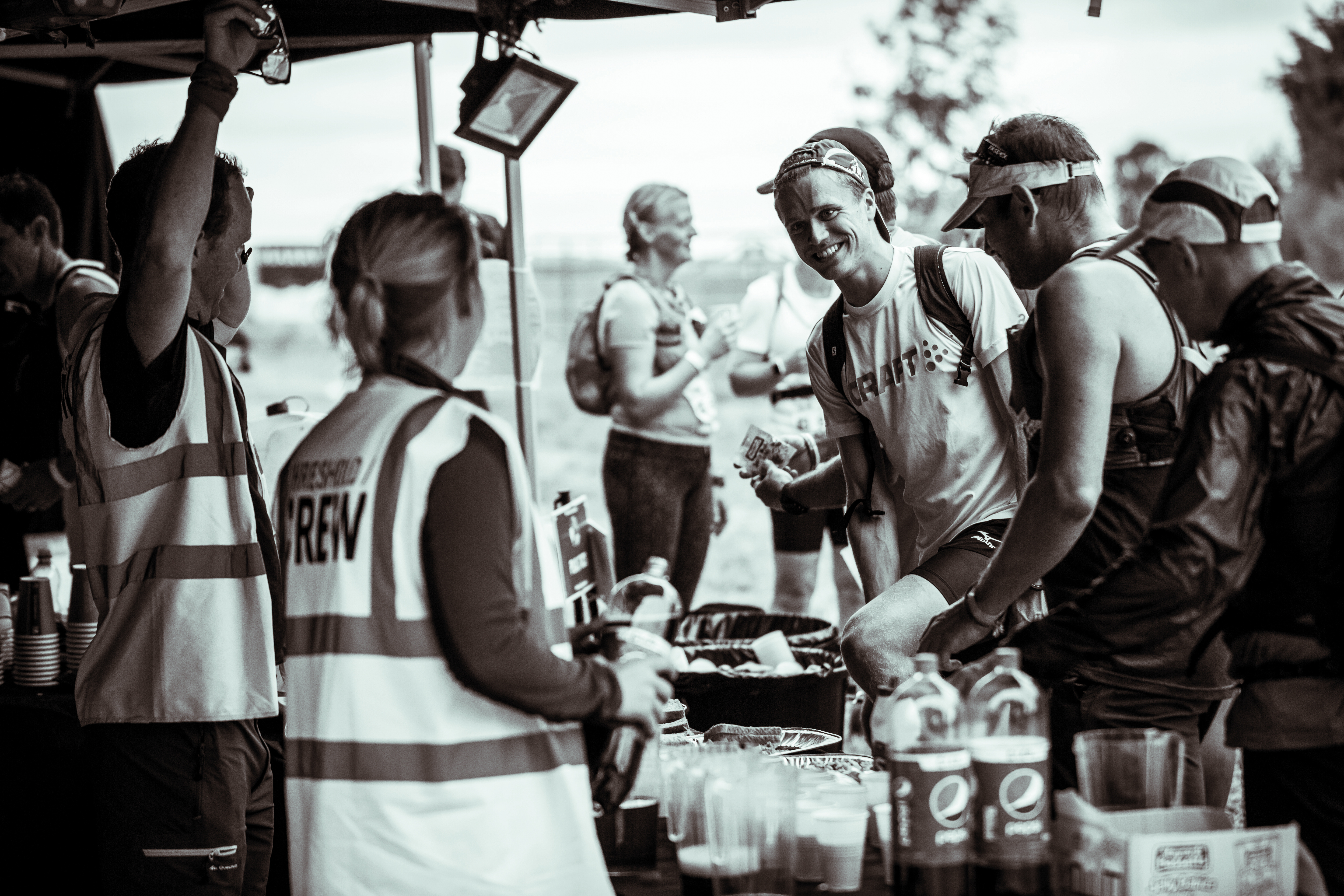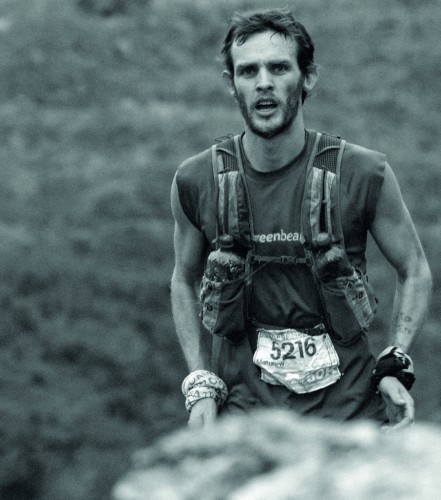
Race to the Stones is renowned for its excellent aid stations
At the 2017 Nathan’s Famous Hot Dog eating contest, Joey “Jaws” Chestnut scarfed an incredible 72 hotdogs in 10 minutes.
The Major League Eating Champion (yes that’s a thing) piled over 19,000 calories into his gut. That’s enough food to power a man for eight days.
Chestnut is the advertising face of US supermarket freezers and is often surrounded by models as he gorges himself.
It’s a tenuous link to what trail runners can learn from a man who can make 7kgs of fast-food disappear in the time taken to microwave a sweet potato.
But as written in Born to Run about our own sport, it’s really “just an eating and drinking contest with a little exercise thrown in.”
So with a nod to noshing like a pro, here are some thoughts about aid stations: how to plan a race around them; the food and drink to choose; and how to chow down like a champ.
Make the most of aid stations

Aid-station short game
Shorter trail races (up to half-marathon distance) don’t require midway hotdog consumption. Stick to water, or isotonic ideally, to help reduce cramps later in the event and help speed up post-race rehydration.
If offered a paper cup, squeeze the rims together as you walk away to make a small spill-free drinking hole. (Then stuff in your rucksack to recycle later.)
Choose simple sugars such as Jelly Babies or an energy gel which can enter your blood stream and provide an energy boost within 15 minutes.
Alternatively consider a carbohydrate drink sachet to top up energy levels. Hard-to-swallow foods like chocolate will disrupt your heavy breathing, and dry foods won’t release useful calories until the race is over.
No nattering either at short-race aid stations. Get in, get out.
Long-distance dining
During long-distance trail races of 13 plus miles, most runners don’t eat enough. You might feel nauseous or lack appetite, but your body is desperate for energy.
Shovel it in. Commit to food, like you committed to your training.
Athletes like Joey Chestnut didn’t become the 141 hard boiled egg World Champion by eating for pleasure.
At the first aid station in a long-distance race you’ll probably be confronted by all the back-of-the-cupboard naughties that’ve given you the midnight winky eye during months of training.
Play it smart though. A jam sandwich is a good choice as it has both slow-release and quick-release energy.
Crisps and nuts are great for replacing lost salt. Soups, noodles and a hot drink can help you feel human again and boost morale on a cold day.
The 30g of carbohydrate in a banana will boost your power metre for 30 minutes.
Bananas are easy to force in, easy to digest and contain essential potassium.
If you practise in training, you can learn to nobble a cheese sandwich while running at a decent clip. If you’ve got a sweet tooth, treat yourself to a handful of take-away Haribo. Sucking them one at a time on the move will create a rewarding routine that distracts you from physical exertion.
Approach chairs with caution. They may offer a pick-you-up, but are more likely to set you on a snooze-you-loose crash course.
If there are toilet facilities and you need to go, pair a nice sit with something that sounds similar.
House rules
Many races publish their aid station menus online – so no complaining on race day if they don’t have your favourite pork pie brand.
Occasionally in very wild races you can find that food is rationed, and being unprepared and taking more than your fair share can endanger the runners behind you.
Long-distance trail running can sometimes be lonely. Develop a rapport with aid station staff. Smile, laugh and rebuild positive energy.
If they see you are trying hard, they might even refill your bottles to save you time. But maybe not.
Never demand too much from someone giving up their free time to stand in a damp field. Always say thanks when checking out.






